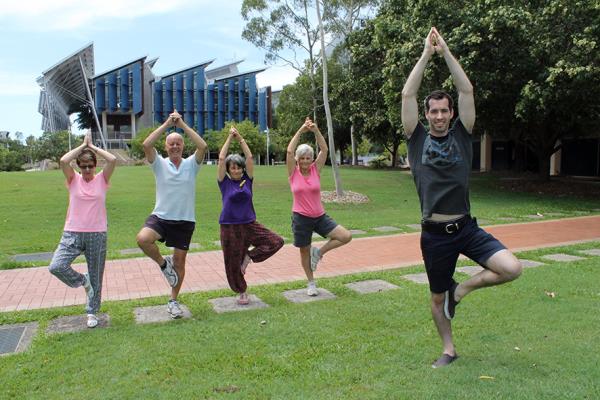NEW research from a University of the Sunshine Coast PhD student has shown that seniors who exercise in groups are likely to have a reduced risk of falls later in life.
Vaughan Nicholson, a 33-year-old physiotherapist of Ferny Hills in Brisbane, conducted a three-part study looking at the impact of group fitness on more than 100 adults aged 55-75.
His PhD in Sport and Exercise Science specifically analysed the benefits for seniors who participated in group BodyBalance and BodyPump classes over a 12 to 26 week period as well as an interactive virtual balance game.
BodyPump is a supervised gym work out performed to music using free weight equipment, barbells and aerobic steps.
BodyBalance is a balance work out comprising yoga, tai chi and pilates that builds flexibility, balance and strength.
The project, which is supported by the Australian Fitness Network, found there was an improvement in functional task performance, which could lead to greater stability, spatial and balance awareness.
“This improvement in being able to perform basic tasks and balance could potentially help in reducing the future risk of falls in participants,” Mr Nicholson said.
“The research also found that BodyPump participants had increased upper and lower body strength and their lumbar spine bone mineral density.
“These findings clearly demonstrate that group fitness is a not just an activity for the younger generations.
“It is a very effective form of activity for healthy adults aged 55-75 and can play a role in helping them to retain and increase their balance over the longer term.”
Mr Nicholson’s supervisor Dr Mark McKean said the findings of the USC research would be rolled out on an international level to inform the managers and members of more than 14,000 fitness clubs.
“Clubs utilising the group exercise programs designed by Les Mills International will use these findings to further improve and support these group exercise programs,” Dr McKean said.
“This is a fantastic result as the characteristics of the average fitness club member are changing dramatically and clubs need to change their offerings to meet varying member needs.”
Get the latest news to your email inbox FREE!
REGISTER






